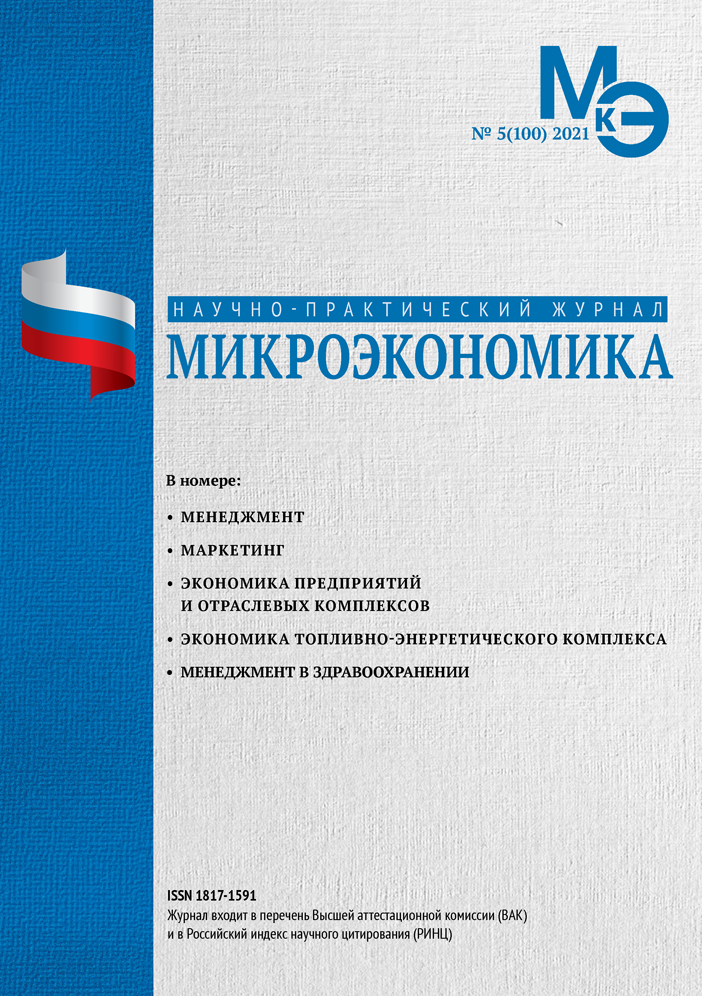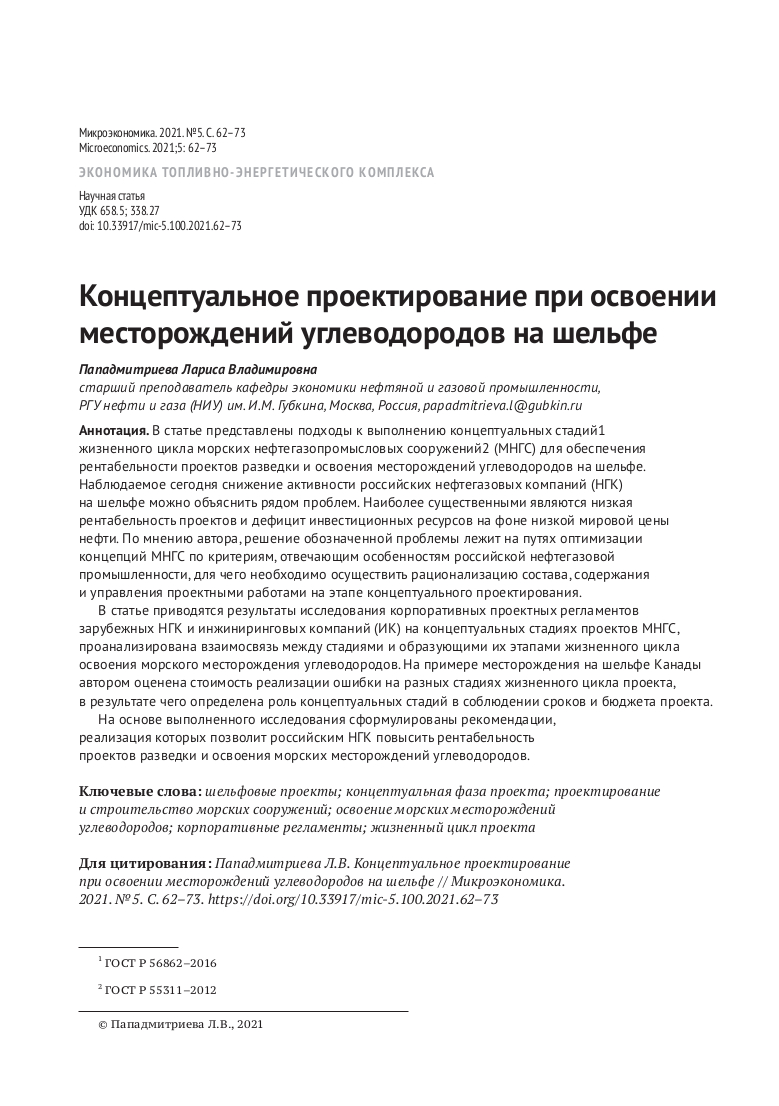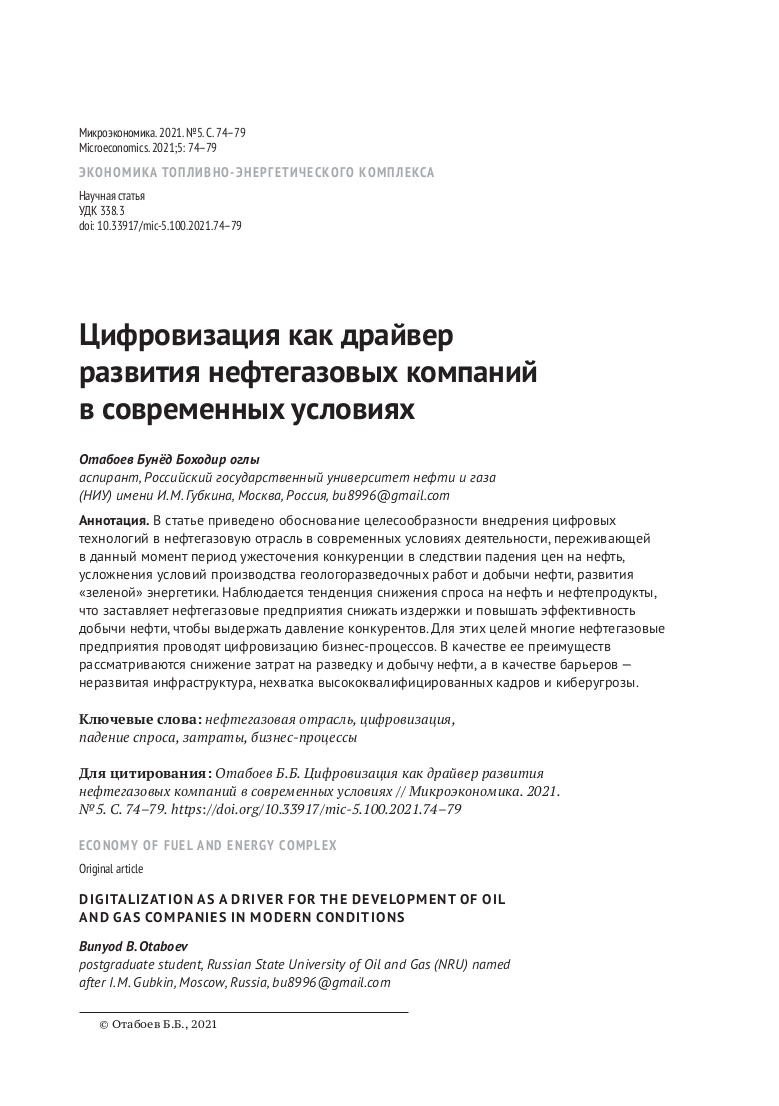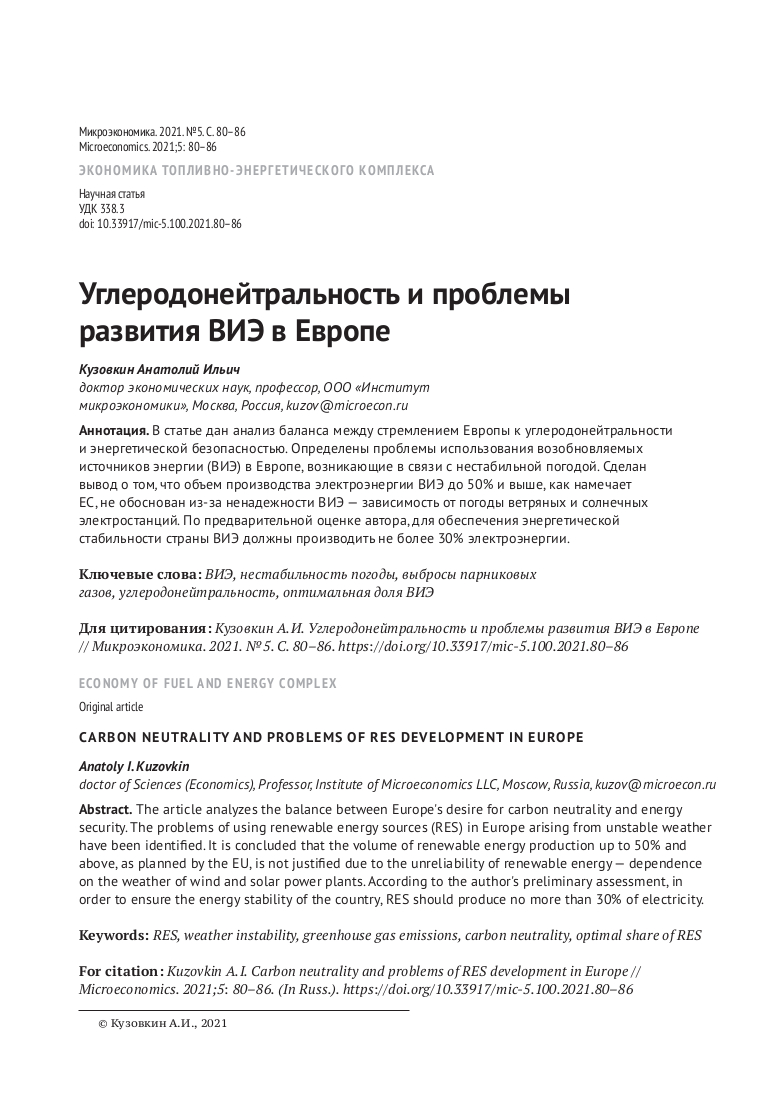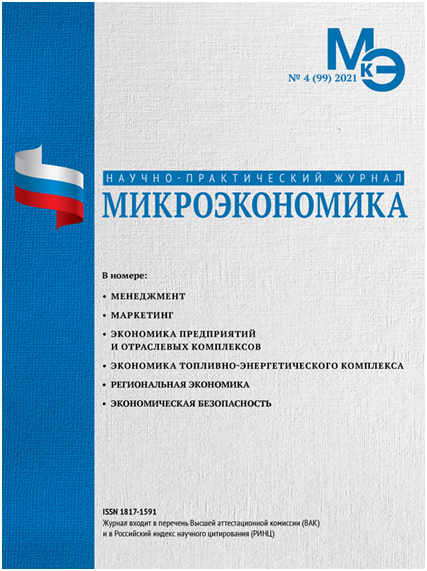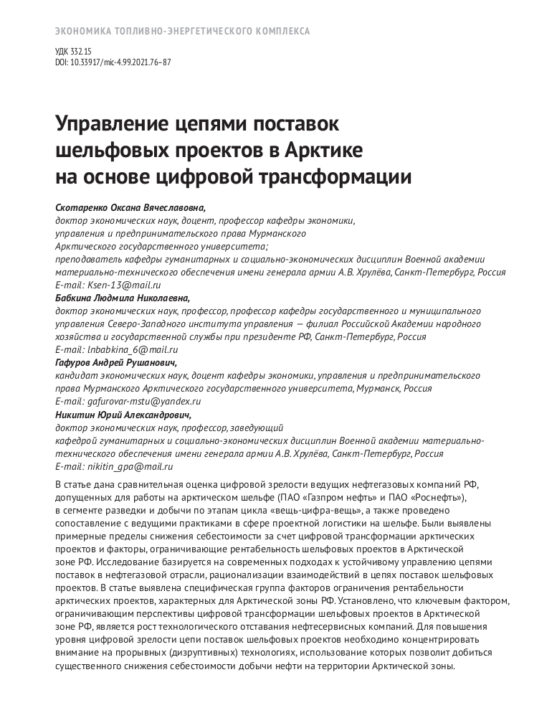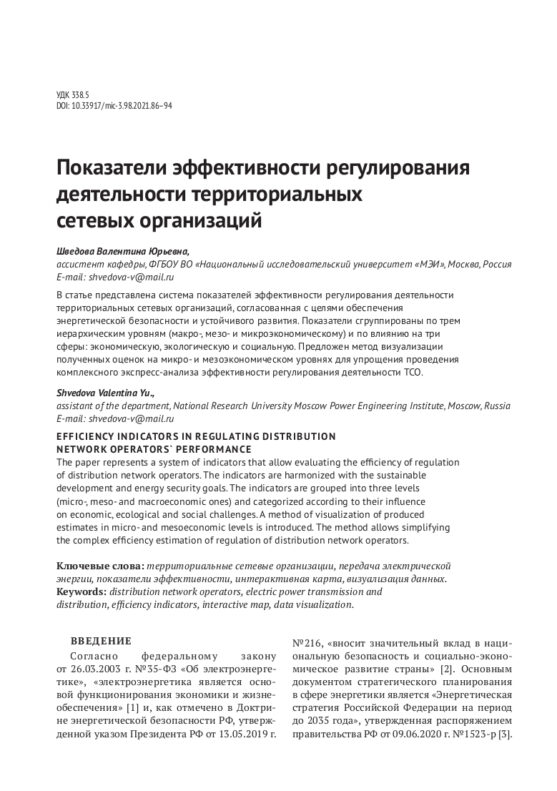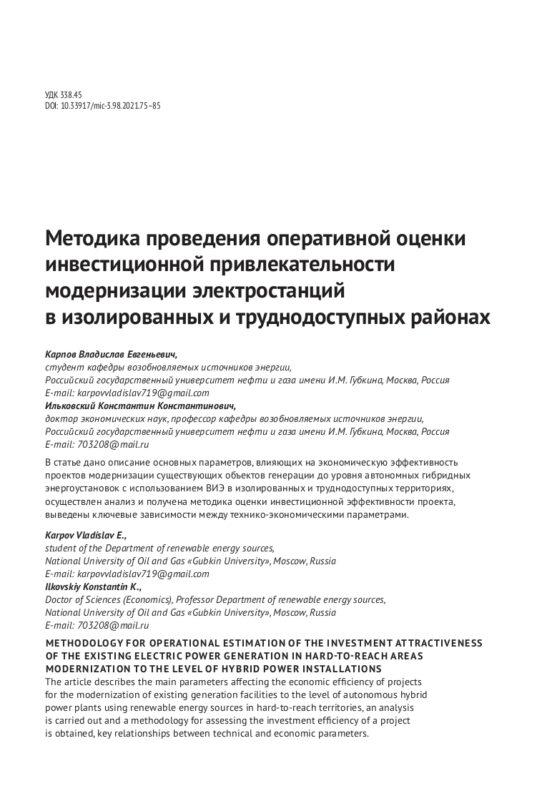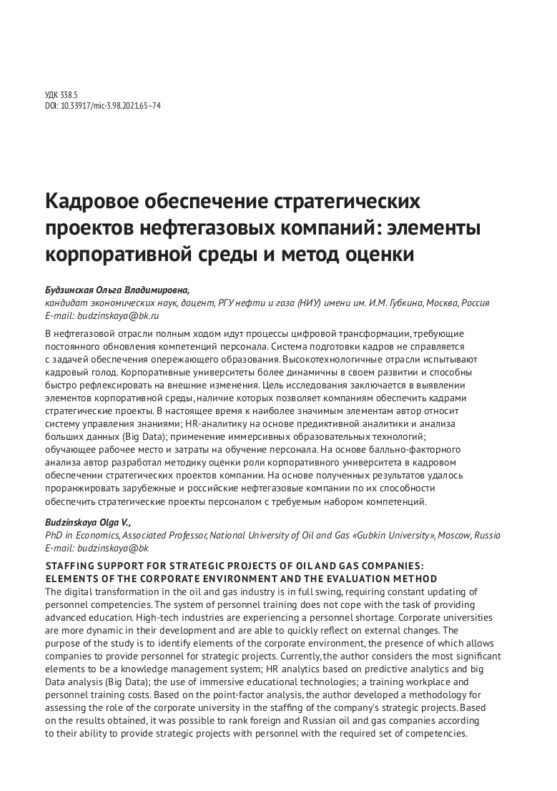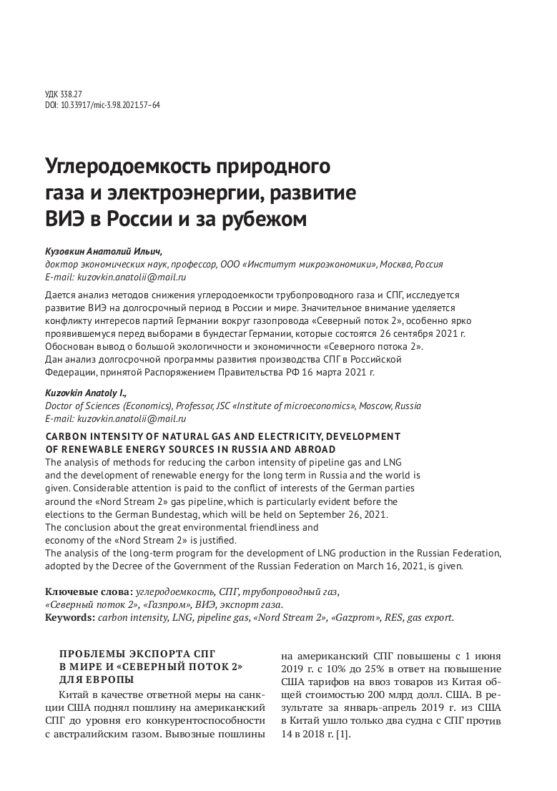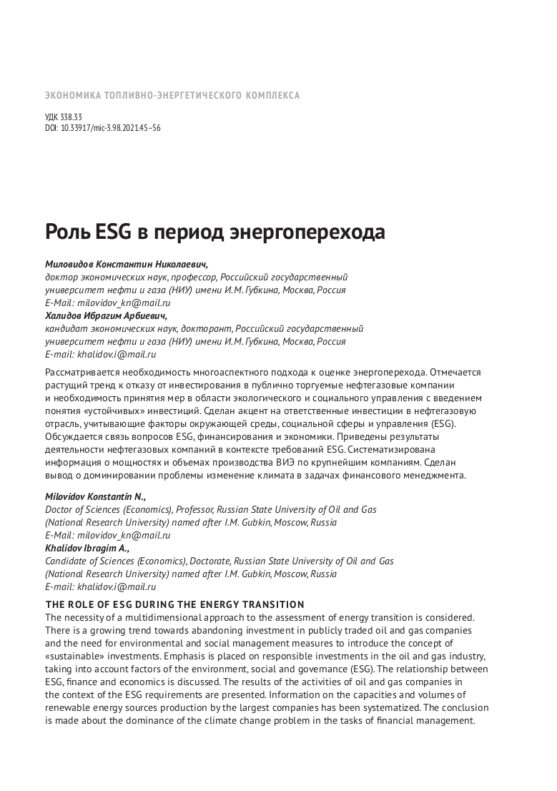Conceptual design for offshore hydrocarbon fields development
DOI: 10.33917/mic-5.100.2021.62-73
The article presents approaches to the implementation of the conceptual stages of the life cycle of offshore oil and gas structures (OOGS) to ensure the profitability of projects for the exploration and development of offshore hydrocarbon fields. The current decline in the offshore field activity of Russian oil and gas companies (OGCs) can be explained by a number of concerns. The most significant are the low profitability of projects and the lack of investments due to the background of low global oil prices. According to the author, the solution to this problem lies in the ways of optimizing the concepts of OOGS according to the criteria that meet the characteristics of the Russian oil and gas industry, for which it is necessary to rationalize the scope, content and management of project work at the conceptual design stage.
The article presents the results of a study of corporate project regulations of foreign OGCs and foreign engineering companies (ECs) at the conceptual stages of OOGS projects, analysis of the relationship between the stages of the life cycle of the offshore hydrocarbon field development. Using the example of a field on the Canadian shelf, the author estimates the cost of implementing an error at different stages of the project life cycle, as a result of which the role of conceptual stages in meeting the project’s on-time and in-budget goals is determined.
On the basis of the performed research, recommendations are formulated, the implementation of which will allow Russian OGCs to increase the profitability of projects for the exploration and development of offshore fields.


